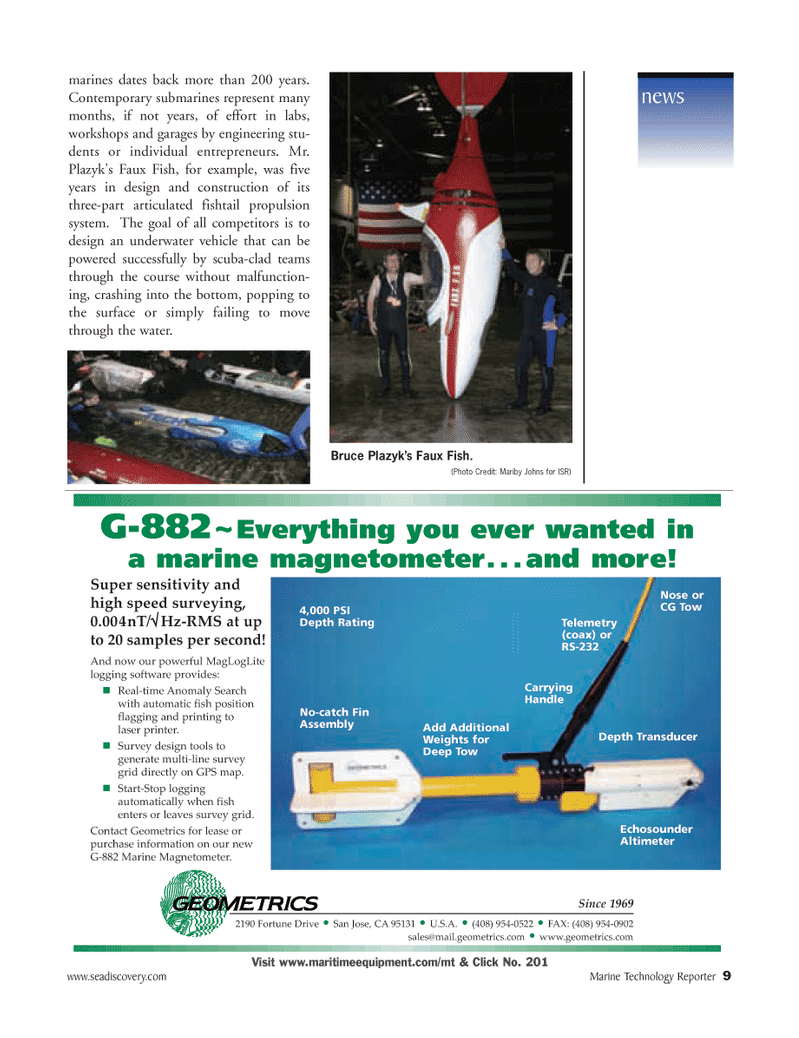
Page 9: of Marine Technology Magazine (September 2005)
Maritime Security & Undersea Defense
Read this page in Pdf, Flash or Html5 edition of September 2005 Marine Technology Magazine
www.seadiscovery.com Marine Technology Reporter 9 marines dates back more than 200 years.
Contemporary submarines represent many months, if not years, of effort in labs, workshops and garages by engineering stu- dents or individual entrepreneurs. Mr.
Plazyk's Faux Fish, for example, was five years in design and construction of its three-part articulated fishtail propulsion system. The goal of all competitors is to design an underwater vehicle that can be powered successfully by scuba-clad teams through the course without malfunction- ing, crashing into the bottom, popping to the surface or simply failing to move through the water. news
Since 1969 2190 Fortune Drive • San Jose, CA 95131 • U.S.A. • (408) 954-0522 • FAX: (408) 954-0902 [email protected] • www.geometrics.com
G-882 ~
Everything you ever wanted in a marine magnetometer. . . and more!
And now our powerful MagLogLite logging software provides: �? Real-time Anomaly Search with automatic fish position flagging and printing to laser printer. �? Survey design tools to generate multi-line survey grid directly on GPS map. �? Start-Stop logging automatically when fish enters or leaves survey grid.
Contact Geometrics for lease or purchase information on our new
G-882 Marine Magnetometer.
Super sensitivity and high speed surveying, 0.004nT/vHz-RMS at up to 20 samples per second!
No-catch Fin
Assembly 4,000 PSI
Depth Rating
Carrying
Handle
Telemetry (coax) or
RS-232
Nose or
CG Tow
Depth Transducer
Echosounder
Altimeter
Add Additional
Weights for
Deep Tow
Visit www.maritimeequipment.com/mt & Click No. 201
Bruce Plazyk’s Faux Fish. (Photo Credit: Mariby Johns for ISR)
MTR#2 (1-16).qxd 8/31/2005 9:16 AM Page 11

 8
8

 10
10
